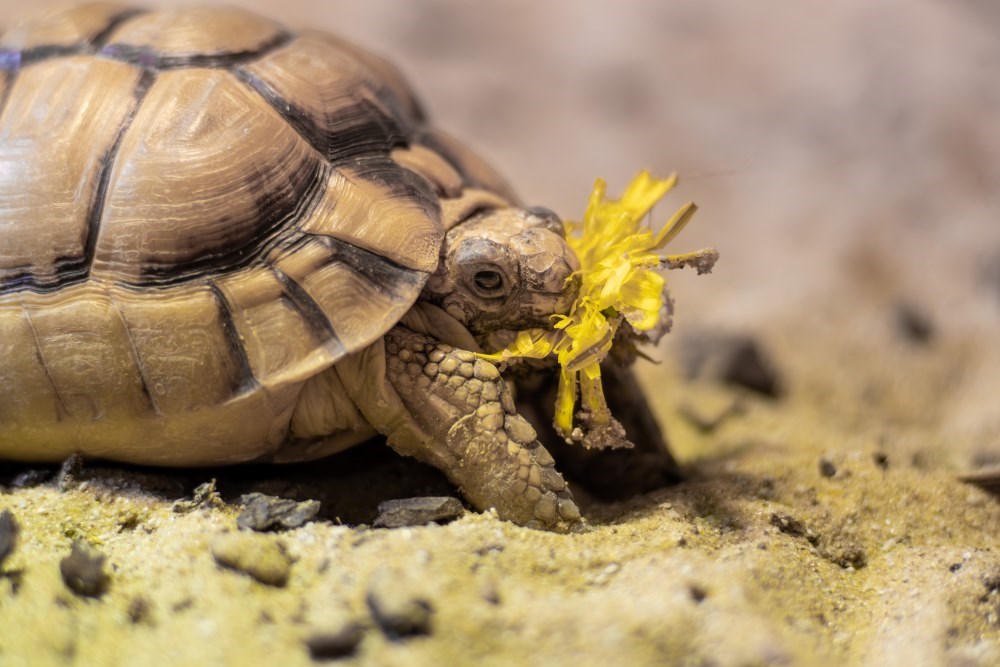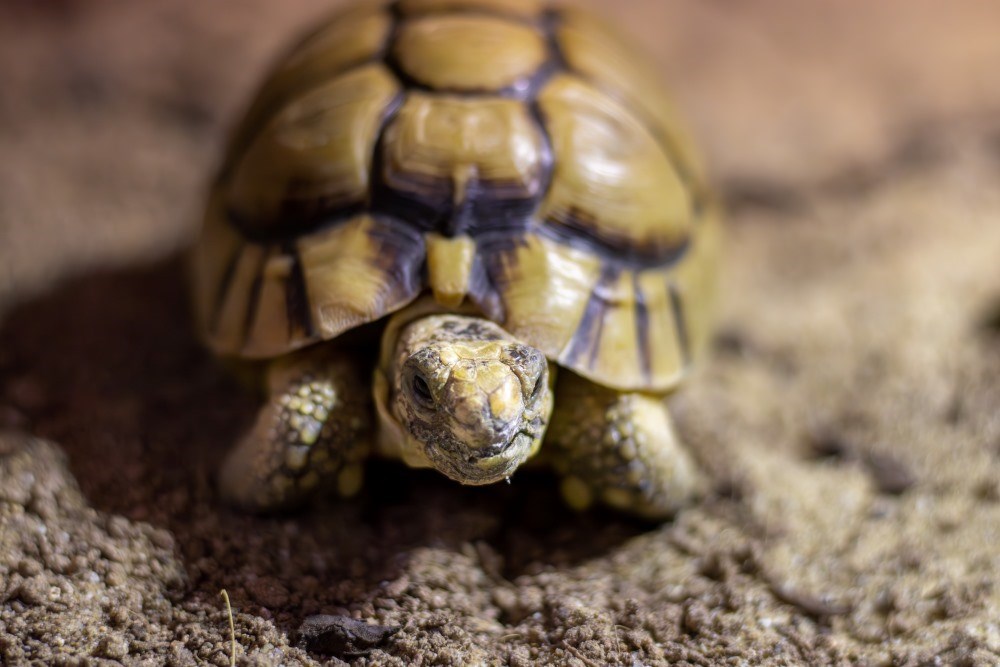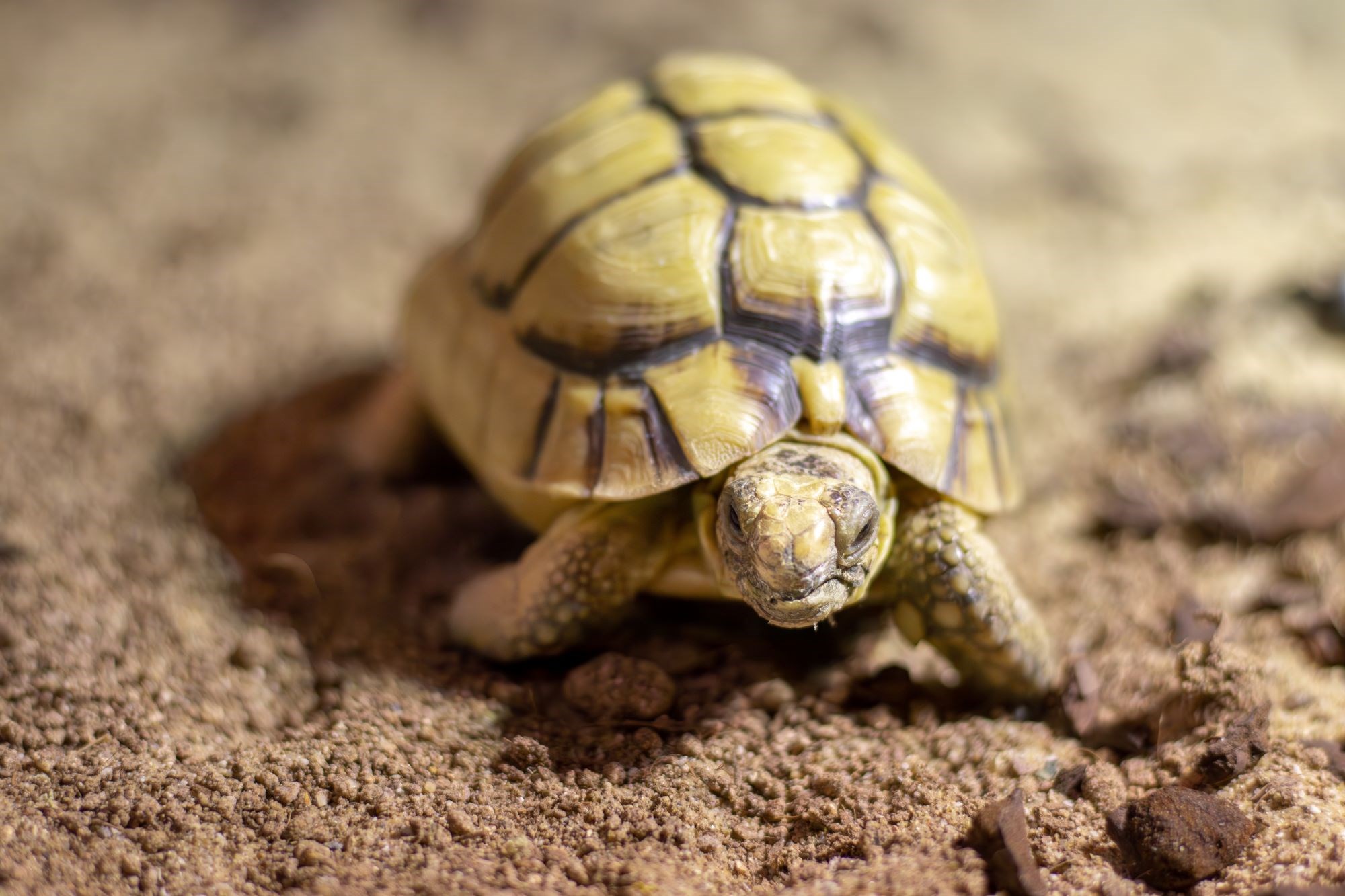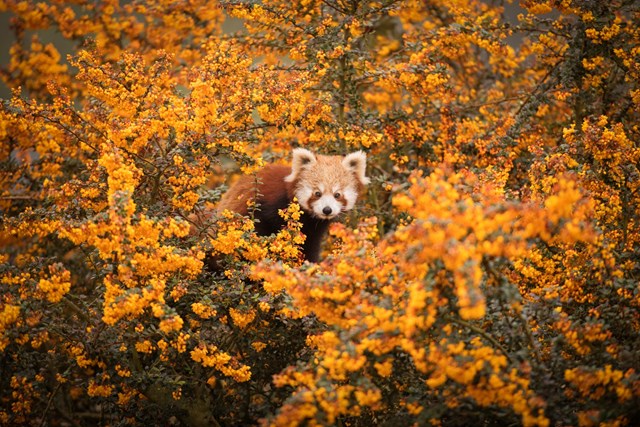
Overview
These small slow-moving animals can be seen in the Dissscovery Zone in the Foot Safari.
These tiny reptiles have a pale colouring which helps protect them from the heat of the desert, which also works as great camouflage!

All about us
| Distribution: | Libya and Egypt |
|---|---|
| Habitat: | Semi-Arid Desert |
| Height: | Length 14cm |
| Weight: | Between 156 - 354g |
| Lifespan: | 20+ years |
| Threats: | Habitat loss and capture for illegal pet trade |
About us
Scientific name: Testudo kleinmanni
Egyptian tortoises are particularly tiny. In fact, they are the smallest species of tortoise found in the Northern Hemisphere. Once found in Egypt, these little creatures love desert conditions and can often be seen resting in the hot sand in their enclosure.

Male Egyptian tortoises are typically smaller than females but have longer tails.
These tortoises have pale colouring which helps to protect them from the heat of the desert, which works as great camouflage. This light colouring is a natural adaptation, which the Egyptian tortoise has evolved across thousands of years of survival in the hot desert climate - helping them keep out of sight and hidden from predators.
Very little is known about the diet of Egyptian tortoises in the wild, due to their dwindling numbers. It is thought that they survive on the leaves and flowers of desert plants in their natural habitat.
In captivity, they are known to thrive on grasses as well as a variety of fruits and vegetables, as they are strictly herbivores.
When they are ready to lay their eggs, Egyptian tortoises create a nest by digging a hole around 3-5cm deep into the sandy earth. They then lay between one and five eggs at a time.
Little is known about the breeding behaviours of these tortoises in the wild, but it is thought that these eggs can take anywhere between 70 and 111 days to hatch.
When the young tortoises emerge, they are extremely small. They are known to weigh between 4-5g and measure up to 30mm long at this early stage in their development.
Egyptian tortoise populations have been devastated by habitat loss and capture for the pet trade. These tortoises are are included in CITES Appendix I, which means that any international trade in the species or its parts is illegal.
The Egyptian tortoise is a protected species in Egypt, but not in the neighbouring country of Libya, where this species was also once found. There are protected areas for this tortoise in Egypt, but unfortunately the species is currently extinct in Libya due to this lack of protection.
The Egyptian tortoise is one of the smallest tortoise species in the world.
This species of tortoise is known to live in abandoned rodent burrows, which helps them hide from predators.

